TAI SAAR I MNAI
The Book of Heaven and Earth
Foreword
The Tai Saar i Mnai represents the heart of the Tradition of ancient Druidic shamanism by which the School of Meditation of the New Earth Circle, identified in the School of Kemò-vad Sole Nero, is inspired and from which it takes reference. It is the sacred text on which its identity and work are based.
A text that contains all the knowledge handed down by the Tradition in which the history of mankind and the cosmic philosophy of the Tradition itself can be seen, together with the message left by the Ancients who, according to the legend shared by all the traditions of the Natural Peoples of the Earth, visited this world.
To understand the role and meaning of Tai Saar i Mnai, which can be translated as the “Book of Heaven and Earth”, we must introduce the nature of the Tradition to which ancient Druidic shamanism refers and the origins of the Book itself.
The nature of Tradition
Tradition should not only be thought of as a historical event or a social system capable of unfolding through the millennia to transmit ancient knowledge, as it also possesses a mystical and magical characteristic based on the telluric and cosmic forces with which Nature manifests itself.
Tradition draws its specific identity precisely from Nature: Tradition is the universe conceived according to the phenomenon of entanglement, it is the Mystery immanent in all things, expressed through its intangible nature and its archetypal elements.
From this perspective, the concept of Tradition can be identified in various events, all significantly parallel to each other.
Here are some that can contribute to its particular identity:
- the fire dragon that came out of the gash in the void that gave life to the universe;
- the fertilising comet that brought life to this world;
- the intervention of the meteor shower that changed the fate of the Earth;
- the teaching of the Gupatra, the ancient masters who brought knowledge to the planet;
- the Mystery that is immanent in the whole universe;
- the inner experience of the individual merging with the intangible nature of the Whole.
We can consider Nature as a living system capable of giving life. A cosmic meditator that lives its cosmic nature.
A mystical entity of which we can all be part in an aware and creative way.
Tradition and the Three Gifts of Phaeton
According to the ancient Druidic tradition narrated in the “Tai Saar i Mnai”, Phaeton left the men of the time three gifts, representing three experiences linked together in sequence. Gifts that can help change the world into a new Eden, where suffering, violence and wars no longer exist.
A world where there can be peace and brotherhood among all living species, freedom of expression for every individual and true joy of life for every creature that faces and lives the absolute and real nature of the Void, the physical and mystical element from which the universe and the life of every creature that populates it originated.
But Phaeton’s arrival on Earth is not just a myth. There are clear certainties surrounding his appearance in the history of this planet. And these certainties reside in precise elements that are evident in the three gifts that he supposedly left to the people of the time, handed down through the tradition of the ancient Druidic shamanism of the Native Europeans.
1) The Pierced Wheel. Symbol and experience of the mystical path of the Void.
It represents the object that Phaeton supposedly gave to the people of the time when he left the planet, as proof and memory of his presence on Earth.
It is the symbol of his knowledge: a mystical doctrine, referable to the esotericism of the Hatmar, which we also find as the basis of the Tai Shan, and a cosmology of Shan, nature in the intangible conception of Druidism, recognisable in the perception of the worlds experienced by the individual in evolution. Worlds identifiable in the symbolism of the cosmic Tree of Yggdrasil.

|
|
The discipline of Kemò-vad, based on the “Art of conscious
movement“, is a way of life able to heal the body and the mind
and develops the mystical aspect of meditation
|
The symbol of the pierced wheel is found in ancient and modern cultures all over the planet, going by many names, leaving the archaeologists of the mainstream world, who are detached from the real history of this world, without any explanation.
A symbol that is found particularly throughout the Susa Valley, where the ancient event of the coming of Phaeton is said to have taken place.
2) The Nah-sinnar. A therapeutic instrument of the spirit which uses the power of sound to express itself with extraordinary music capable of acting on the Subconscious and freeing the individual from the subjective imprisonment of the mind.
A particular music connected to the practice of meditation. This music is made up of modules based on sequences of prime numbers. The Nah-sinnar has no equal on the planet and is able to do exceptional things. Its sound brings a harmonious and restorative message to the subconscious of the individual who listens to it, generating effects of toning and metabolic harmonisation with results that go way beyond those of ordinary music therapy, generating spontaneous physical relaxation and the emptying of the mind.
Moreover, this music is also capable of triggering visions that manifest themselves in dreamlike states that can make the individual experience unknown and unimaginable situations. This property is used by shamans to implement psychological therapies and to solicit individual responses to personal problems. Due to its ability to silence the mind and body and consequently to allow the conscious Ego to easily achieve inner Silence, it represents a gateway to the properties of the Void and is intended primarily for the practice of meditation.
3) Kemò-vad. The dimension of life that is lived in the perspective of the Void in which Tradition is identified.
Kemò-vad is implemented in both dynamic and static meditation and is based on the “Art of conscious movement”. Kemò-vad, in the archaic Shannar language, means “dancing in the wind”, “being wind in the wind”. It represents the mystical experience manifested by the esotericism of the pierced wheel.
An experience that can ensure a condition of psychophysical well-being that can enable us to achieve the inner Silence in which to approach the nature of the Void, with the resulting way of life, a “way of life” based on ecospirituality.
This discipline is capable of healing the body and mind, leading to mystical intuitions, a result that no other similar technique can achieve with the same speed.
Kemò-vad has crossed time and is still with us today, even transforming itself into the disciplines of the Orient, where it is said to have been taken by the Ard-rì, Phaeton’s Pupils. There is a legend on the origin of Tai Chi: according to the traditional narration of the Chan Family, they received the discipline from a traveller who came from the West.
The School of Meditation of the New Earth Circle is identified in the Kemò-vad “Sole Nero” School and proposes a progressive path of experiences that develop in the Ordinary Gymnasium and in the Higher Gymnasium. The latter develops the mystical aspect of meditation.
The birth of the Tai Saar i Mnai
According to the legend, Phaeton had divided the experiential skills of his School into five sequential levels which were the stages of implementation of the Golden Path, the realisation of meditation on an individual and a social and historical level.
The roles of the Ovates, Bards and Druids were outlined. It was up to the Bards to keep the memory of the events of the planet alive.
This led to the creation of the Tai Saar i Mnai, a philosophical and historical book that would be a fundamental reference for the whole Tradition.
The sayings and knowledge of Phaeton and the wise men, witnesses of the ages following his appearance on Earth, were recorded in the Book.
The Tai Saar i Mnai consists of 12 chapters called “Vara” (enclosures, containers of knowledge) and is symbolically divided into two main parts:
- the seven Vara of Heaven, regarding the philosophical and cosmological part;
- the five Vara of Earth, regarding the historical and ethical part.
Each of the 12 chapters has its own origin dating back to different and distant eras.
One could say that the Book is made up of a mosaic of cosmological and historical contents which, although compiled in different eras and by different Druidic groups, maintain a precise homogeneity in terms of meaning and narration, capable of conveying a linear quality to its reading.
Esoterism and mysticality of the First Vara of the Tai Saar i Mnai
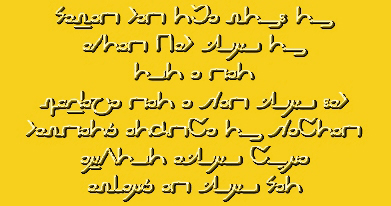
This Vara manifests the mystical identity of Tradition referred to the harmony with the nature of the Void through a cosmological archetype that echoes in the Temple of the Universe with all its mystery, involving the inner and creative experience of the Initiate.
Modern cosmology traces the birth of the universe back to the Big Bang, an extraordinary and mysterious event manifested in a quantum void with the explosion of a parcel of energy. An explosion that gave life to the current architecture of the universe, from the planets to life and awareness of our existence.
An event that has been incorporated into the beliefs of many religions. But people do not want to believe in a cosmic God who created the universe to give existence to man.
We are faced with a mystery that has no explanation. The universe exists and it appeared out of nowhere due to a quantum field fluctuation. Today we wonder about the nature of the phenomenon, but we cannot guess the Prime Cause which may have given rise to the whole and which possibly merges with this quantum void.
Our experience links us to the ordinary laws of everyday life and we cannot imagine the nature of the quantum void in which the universe and our existence were born. We cannot even imagine the sense of causality that gave rise to the universe and to us.
The concept of the quantum void in which our universe, and probably many others, is suspended becomes an experience of mystical void that we cannot define with any intuition or philosophical conceptuality.
We can merely connect with the dimension of this Void by meditating and asking ourselves whether we are called to participate in the manifestation of a physical phenomenon or a transcendent design.
One thing is sure; if we connect with this evanescence of Void we can find peace and harmony. Possibly even the very meaning of our existence.
The origins of the First Vara of the Tai Saar i Mnai
The Tai Saar i Mnai developed around the First Vara.
The Primo Vara has ancient origins. We can place it as far back at the time of the legend of Phaeton and Tah-Ai, when the Primordial Masters came.
It consists of seven verses (gei narshahq) shown in the box in the original version in Shannar, the ancient language of Druidic Shamanism.
The Tai Saar i Mnai and recent history
Tai Saar i Mnai has always been at the heart of the work of Tradition.
In the year 1000, faced with the violent repression of Native European culture, the Golden Table, symbol of the initiatic school of ancient tradition, was exhibited in Ireland for three consecutive days at the great cromlech in Lough Gur. It represented a determined act to give a clear signal of the beginning of the process of rebirth of the ancient tradition in Europe in terms of the historical events of the continent.
The Tai Saar i Mnai has always been a book transmitted orally and learned by heart. However, in 1600, to counter the cultural penetration of Christianity of the time that led to the loss of the memory of the principles and knowledge of the ancient tradition, a group of Scottish and Irish Druids translated it from the ancient language into Gaelic, putting the text in writing, so that it could be known and remembered by those who frequented their communities.
Later, in 1680, the Book was translated into English, then into German and French and then from the latter, in about 1700, into Italian, intended for the initiatic community that was regrouping in Northern Italy, having been the worst affected by religious repression in Europe, the events of the Cathars being an example.
Infoline: info@newearthcircle.org
|
The New Earth Circle
Farewell, Giancarlo
Towards a New Earth
In the name of the Grail
The Ancient Heart of the New Earth Circle
The tradition of the Grail
Tai Saar i Mnai, the Book of Heaven and Earth
Planetary Meditation on Tuesday
The Meditation Circles
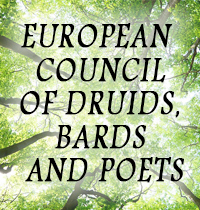
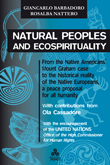

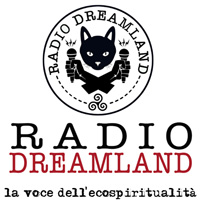
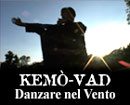
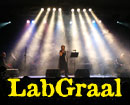
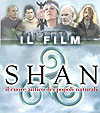

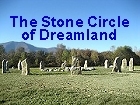
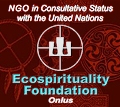
|











